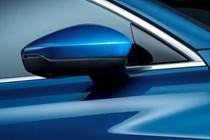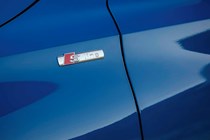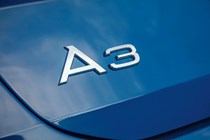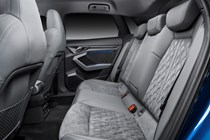Audi A3 engines, drive and performance
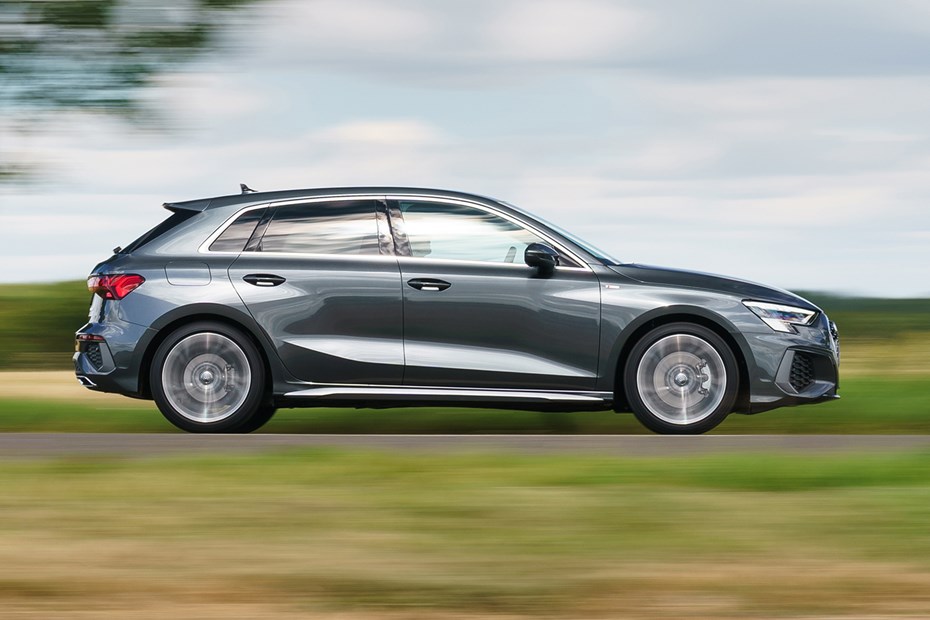
- Diesel engine hits the sweet spot
- Manual gearbox good to use
- Mild hybrid suffers from poor brake pedal feel
Petrol engines
The least powerful A3 on offer is the 30 TFSI, which is powered by a 1.0-litre 116hp engine with a 0-62mph time of 9.9 seconds. Next up is the 35 TFSI, which gets a 1.5-litre turbocharged four-cylinder petrol with 150hp and 250Nm of torque. This one feels more than fast enough for most situations. It feels a bit quicker than the 0-62mph time would suggest and is just the ticket for people who can’t warrant a diesel, but still want something that won’t leave them embarrassed on a ring road.
This engine is an MHEV, which stands for Mild Hybrid Electric Vehicle technology; this version harvests some of the energy wasted when braking or coasting to top up a battery which then powers the car at low speeds, saving energy. It’s not a full hybrid system, but it’s a handy way to save fuel.
It’s also equipped with Audi’s cylinder-on-demand tech that can shut off the two centre cylinders to conserve fuel under reduced engine loads. In this case it uses a 48-volt electrical system connected with a belt alternator starter that stops and starts the engine more smoothly and enables it to fully switch off while coasting at speeds of up to 100mph. This works seamlessly – the only way you can notice the cylinders cutting out on a cruise on the motorway is the car’s driver display showing it to you.
The range-topping S3 is a popular version of the A3 hatchback range, accounting for one in five sales in Great Britain. It’s not surprising when you think about it, given the substantial increase in performance and Quattro all-wheel drive for superior year round grip. You can read more in its own separate review.
Diesel engines
The 30 TDI uses a 2.0-litre diesel engine like the 35 TDI below, but it’s less powerful, with 116hp on tap. When mated to a six-speed manual gearbox, it’s more economical and has lower emissions than the 35 TDI. Which should benefit company car drivers and those that cover high mileages.
The 2.0-litre 35 TDI diesel engine is now more refined than previous versions, delivering its power in a smoother and more responsive fashion, especially when equipped with the seven-speed automatic transmission. BMW’s eight-speed auto is nicer, perhaps, though only by a small margin.
The 35 TDI feels sufficiently quick on A-roads and motorways that you’ll rarely feel there’s not enough power to cope with a full load or the steepest hills. In Sport mode, the accelerator is responsive and the steering is sharp and gives you all the feel you need in bends. If anything it’s a little too responsive, and you could quickly tire of its hair-trigger throttle – if you do, put it into Eco mode, and it turns into a much more relaxing car to drive.
Plug-in hybrid
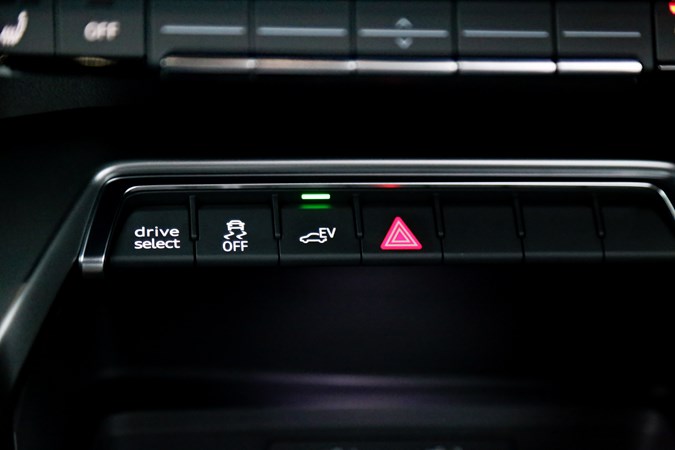
On paper, the plug-in hybrid 40 TFSI e is the most economical, cleanest, and second-fastest A3 available. This plug-in hybrid combines a 1.4-litre petrol engine and an electric motor to make 201hp. Peak torque is 350Nm, and it’s only available as an auto.
Efficiency is of course king, but stick it in the Dynamic driving mode and it feels quick. There’s a low gut punch of torque as the electric motor kicks in, really propelling the car down the road.
Of course, there are different EV modes and a designated EV button. Default mode is electric – which tries to just use the battery. While there’s also a hybrid mode that will allow the car to figure out how to use the petrol/electric depending on the situation. The hold function is simple and works well – allowing you to hold onto some juice in anticipation for low emission zones or cruising silently in your street.
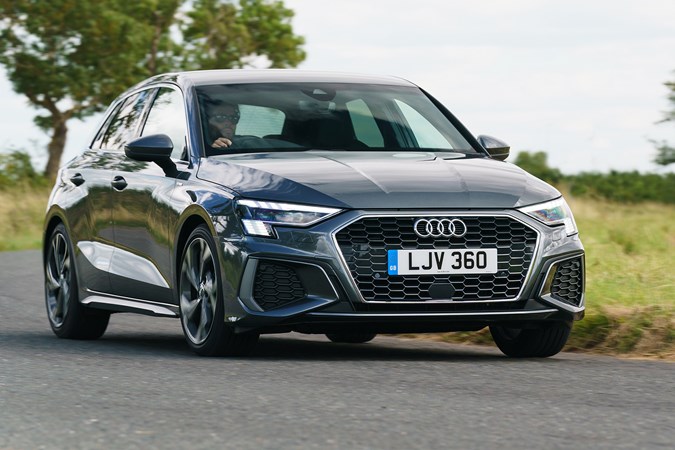
What’s it like to drive?
- Adaptive suspension option adds greater capability
- Less powerful versions get torsion beam rear axle
- Electromechanical steering has plenty of feel
First thing’s first – and this is a shock for all those who think Audis are only good at motorways – the A3 is a thoroughly good driver’s car. It’s up there with the BMW 1 Series, and slightly ahead of the much-improved Mercedes-Benz A-Class. But that’s with the caveat that we’ve only tried the more powerful model with independent rear suspension and Drive Select.
With the exception of the base level Sport model, all Audi A3s come equipped with a Drive Select function, enabling drivers to choose between four-to-five pre-set modes, depending on the engine. These subtly alter the response of the throttle pedal, the power-assisted steering and in the case of automatic transmissions, gear changes.
The suspension setup of the A3 varies according to which model you choose. All versions with less than 150hp get a relatively uncomplicated torsion beam rear axle setup, while A3s with 150hp or more get a more advanced multi-link rear suspension.




























